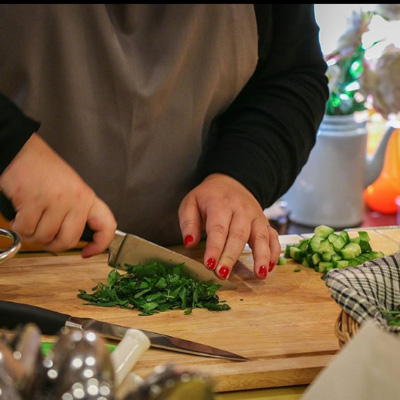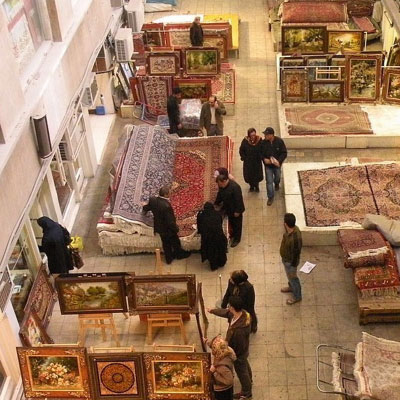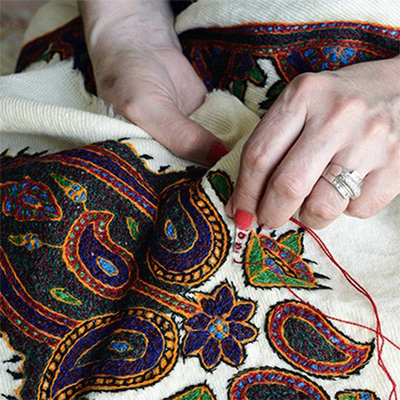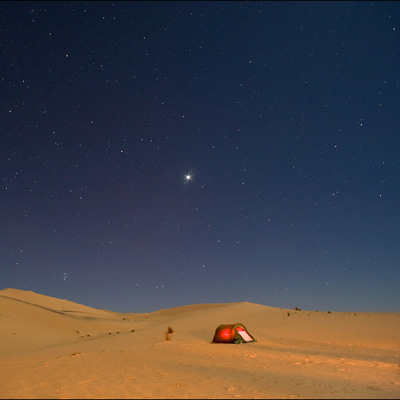Accommodation
18 Hotel, 1 Homestay
On this trip, we will introduce you the culture of Iran and the UNESCO World Heritage Sites. We embark our journey from Tabriz, and after visiting the great Tabriz Bazaar and the Mehri Temple of Maragheh, we continue to Takab. We consider visiting Takht-e Soleyman and Taq Bostan. In Susa, we head out to the Chogha Zanbil Temple and move towards Shiraz. After immersing in Shiraz atmosphere and enjoy the works of the Achaemenid period, we go to Yazd. There, you will explore the Fire Temple of Zoroastrian and Isfahan is our next destination. In Esfahan, you will ramble through Naqsh-e Jahan Square and other Safavid works. The tour ends with a visit capital of Iran.
.
Day 1: Tabriz
Upon your arrival at Tabriz airport, you are welcomed by the representative of Shakiba Company. After serving breakfast and taking a short rest, you’ll go to visit Azerbaijan museum. This museum is the second largest museum in Iran in terms of historical monuments. Afterward, we’ll introduce you Blue (Kabud) Mosque (15 century AD). You’ll see the most beautiful tile in the world in the facade of this mosque. The next site is a Tabriz Bazaar (World Heritage Site) where is the largest one in the world and has accepted many traditional jobs. In the evening, our guide leads you through Shahgoli Promenade where you spend the enjoyable time by walking alongside the beautiful pool and being among the locals.
Overnight: Tabriz, Meals: B, L, D
Day 2: Tabriz - Jolfa - Tabriz
Today, you have a chance to visit the St. Stephen’s Church (World Heritage Site). This church was built in 10th to 12th centuries, and it is architecturally beautiful and unparalleled. On the way to St. Stephen’s church, there is the Aras River, which forms the border between Iran, the Republic of Azerbaijan, and the Republic of Armenia. After the Russo-Persian Wars, this river was designated as the border between Iran and Russia in the 17th to 19th centuries. After sightseeing, you’ll back to Tabriz and stay there.
Overnight: Tabriz, Meals: B, L, D
Day 3: Tabriz - Kandovan - Maragheh
After having breakfast, we leave Tabriz to Kandovan. The houses of this village are carved in the mountains and dating back to the 5th millennium BC. After spending some hours in Kandovan, you’ll head to Maragheh city. Maragheh is known as the city of domes, and it has been the capital of Iran during the Ilkhanid period. Embark on an included visit to Ilkhanid Museum, where has kept the most works of the Ilkhanid and Timurid periods. Later, we’ll go on to explore Mehri temple. You spend the night at Maragheh. Exploring amazing sites waits to welcome us tomorrow.
Overnight: Maragheh, Meals: B, L, D
Day 4: Maragheh - Takab
Today you’ll go to the most astounding historical sites of your life. We drive toward Takab and stop at the Takht-e Soleyman (World Heritage Site). Until sixth century AD, Takht-e Soleyman was the largest religious and educational center in Iran that destroyed after the attack of Heraclius, Roman emperor. Here, you can find the works of Parthian (3rd century BC), Sasanian (3rd to 7th Century AD) and Il-Khanid (13th to 14th centuries) eras.
Overnight: Takab, Meals: B, L, D
Day 5: Takab - Kermanshah
Today you are heading to Kermanshah. Spend the morning exploring Taq-e Bostan (third century AD). This historic site consists of several rock reliefs and inscriptions on which the scenes from the coronation of Khosro Parviz and several Sassanid kings were carved.
Overnight: Kermanshah, Meals: B, L, D
Day 6: Kermanshah - Susa - Ahvaz
Today we wander in Susa city. The city belonged to the Elamite period, and the works of this period as well as the Achaemenid, Seleucid, Parthian, Sassanid, and Islamic periods has remained. Chogha Zanbil (World Heritage Site) is the most famous work of the Elamite era which was built in the 2nd millennium BC. This ziggurat is the site of worship to the port of Inshushinak, the guardian goddess of Susa. The king of Elam wrote in the inscription “I’ve engraved the golden bricks and gave away this place to the Inshushinak. I hope to be accepted.” You’ll arrive at Ahwaz and stay there. Prepare yourselves for the next exploring sites.
Overnight: Ahvaz, Meals: B, L, D
Day 7: Ahvaz - Bishapur - Shiraz
On the way Ahwaz to Shiraz, you’ll stop at Nishapur. You drop in on Tangeh Chogan. This site was the polo match location of Sasanian kings. In some parts of Tangeh Chogan, there are rock reliefs of these kings.
Overnight: Shiraz, Meals: B, L, D
Day 8: Shiraz
On the next trip in the heart of Iran, Nasir-al-Mulk Mosque (the nineteenth century) is a good start point. This mosque, known as the Pink Mosque, is considered one of the most exclusive mosques in Iran for Muqarnas and tiling. Don’t forget to take pictures of colored glasses. Qavam House (the nineteenth century) is your next stop. A large courtyard of this house is well known for its rich orange trees. Afterward, you’ll head out to Vakil Bazaar. In this traditional Bazaar, you can dedicate part of your time to eat Faloodeh (it is a cold Persian dessert and it is known as “Persian noodle dessert” in foreign countries). The evening is a good opportunity to be taken to Hafezieh (Ttomb of Hafez). Hafez is a great Iranian poet who has charming Ghazals (Sonnets). The Divan of Hafez (his book of poems) is found in most Iranian homes. It is better to tell your leader to read one of his poems for you. Don’t forget to augur!
Overnight: Shiraz
Day 9: Shiraz
Continue exploring Shiraz on the second day by Persepolis (World Heritage Site). This palace is the best place to get familiar with the architecture dedicated to the sixth and fifth century BC. After visiting Persepolis, you head to Necropolis (World Heritage Site), which has kept rock reliefs and tombs from the Elamite to Sassanid period. Take a stroll to the Ka’ba-ye Zartosht (Cube of Zoroaster). After spending hours in the ancient world, you back to Shiraz and immediately be taken to Eram Garden (World Heritage Site). The establishment of this garden date back to the Seljuk period (11-12 AD), but the beautiful building in the middle of the garden was built in the Qajar period (18-20 AD). Today tour visiting ends with Shah Cheragh which is one of the holy places of Iranians for praying.
Overnight: Shiraz, Meals: B, L, D
Day 10: Shiraz - Neyriz - Kerman
Today, we leave Shiraz toward Kerman. En route to Kerman, we visit Neyriz city. According to the words of historians, it has been one of the Achaemenid Army steel weapons producers. Now, it is time to visit Jame Mosque in this city. It is one of the oldest mosques in Iran, which regarding old sayings, it was the fire temple in the past. Jame Mosque of Neyriz is the first single porch mosques in the Khorasani style architecture. We’ll arrive Kerman at night and stay there.
Overnight: Kerman, Meals: B, L, D
Day 11: Kerman - Mahan - Rayen - Kerman
Kerman is the largest desert city in Iran despite to be located in the desert; it is considered the highest town in Iran. We make our way to Mahan to visit the Shazdeh Garden (World Heritage Site). This garden was built in the Qajar period (1881 AD). You’ll see the most beautiful Iranian fountain here. We’ll leave Mahan toward Rayen. Arg-e Rayen is worth a stop to see. You’ll come back to Kerman and stay overnight there.
Overnight: Kerman, Meals: B, L, D
Day 12: Kerman - Yazd
We’ll head to Yazd this morning. The first visiting is dedicated to the Zoroastrian Fire Temple, which is the beautiful building and a fire is burning here hasn’t extinguished for 1500 years. After fire temple, it is the time to visit Henna workshop. You’ll get familiar with the traditional way of grinding Henna. We’ll continue to Jame Mosque of Yazd (12th century AD). This mosque is considered the masterpiece of the Timurid period its tall minarets being seen far away. An evening is an excellent time to take a stroll in Fahadan quarter and pass through the adobe lanes. After that, we’ll reach Amir Chakhmaq Complex. It is one of the largest urban squares in Iran and the place of traditional businesses in Yazd. On the corner of the square, there is a wooden structure named Nakhl (palm) which the seventy people move it as the sign of human liberation on Ashura day.
Overnight: Yazd, Meals: B, L, D
Day 13: Yazd - Naein - Varzaneh
Today, we leave Yazd to Varzaneh. In the middle of the way, we stop at Naein and visit the cloak weaving workshop. The cloak is a long dress like manteau used by Iranians in the old days. Our next destination will be Pirnia House (Safavid period) or the ethnography museum of Naein. Later, we move toward Varzaneh. It is a desert city where you can get familiar with the desert people’s culture. The first fantastic place you see here is Gavchah (Ox-well Complex). The Dovecote is the next attraction you are going to explore. In the past, the farmers have collected bird dropping and used them as fertilizer required. In the evening, you go to Varzaneh desert, and you could try walking on the sand.
Overnight: Varzaneh (guesthouse), Meals: B, L, D
Day 14: Varzaneh - Isfahan
You’ll move toward Isfahan in the early morning. We start our visiting with the Chehel Sotoun Palace (World Heritage Site). When you count its columns, you’ll get number twenty. Don’t be surprised. Certainly, ask your guide why does it call 40-columns-palace? The fabulous murals of this palace represent the wars and joys of the Safavid and Qajar kings, Afshar (18 century AD). We cross through the beautiful park to arrive at Naqsh-e Jahan Square (World Heritage Site). It is the largest traditional square in Iran, which consists of two mosques, one palace and one Bazaar. Upon arrival at the square, you’ll be taken to the Shah Mosque, which consists of four minarets. In front of the mosque on the north side, there is the Qeysarie Bazaar where you can see the old businesses of Isfahan.
Overnight: Isfahan, Meals: B, L, D
Day 15: Isfahan
Today is the day we have been waiting for. We start visiting Isfahan with Jolfa Quarter (Armenian quarter). Armenian of Isfahan lives in this quarter that they’ve moved to Isfahan from Azerbaijan in Safavid period. There are several churches in this quarter, which Vank Cathedral is the largest one. A museum which will be seen in the cathedral can get familiar you with Armenian history of Isfahan. Don’t miss another museum in Isfahan, Music Museum. In addition to getting familiar with musical instruments, you can listen to the music of various regions of Iran for the moments. We continue our visiting to the Ali-Gholi-Agha old quarter to know about traditional Iranian sports as Zurkhaneh Sports.
Overnight: Isfahan, Meals: B, L, D
Day 16: Isfahan - Abyaneh - Tehran
We make our way to Tehran. In the middle of the way, we head out to Abyaneh village located in the northwest of Natanz. Upon arrival at the village and crossing through the alleys, you’ll face with the stepped view, red-colored houses and local clothing of villagers. In the evening, you move toward the capital of Iran, Tehran.
Overnight: Tehran, Meals: B, L, D
Day 17: Tehran
Tehran is the largest city in Iran, also known as light and sound. In the morning you wake up, you’ll start visiting with National Jewelry Museum. You can see the most expensive jewelry in the world here. These pieces of jewelry have been bought from different parts of Iran and the world by the Iranian merchants. After that, you will be taken to the Golestan Palace (World Heritage Site). This palace with more than 400 years of antiquity (16 century AD) is one of the palaces has remained from the Safavid period. Next destination is Abgineh Museum. The museum, also known as the Museum of Glass and Clay, was established in one of the old buildings in Tehran, which is located in a large garden. The earliest glasses of this museum are the ones belonging to the Chogha Zanbil Temple.
Overnight: Tehran, Meals: B, L, D
Day 18: Tehran
Departure
18 Hotel, 1 Homestay
Private Mini Bus
Professional Guides
17 Breakfast, 17 Lunch, 17 Dinner
Not included
Not Covered in the Tour Price

Let your taste buds begin their exploration.
Persian cuisine is enriched with various tastes & flavors of Turkish, Kurdish and other types. This workshop is a perfect way to explore mystic Iran.

Persian tableau carpet is great wall decorative art pieces. It is an opportunity to buy them as a handpicked souvenir to remember Iranian arts, cultures, tradition, people, and lifestyle all together.

Get acquainted with Patteh making, which is the handicraft of Kerman and highlighted patterns by doing embroidery. Bring flowers and gardens by Patteh into your needlework while you hardly see them around.

You can experience watching the sunrise and sunset and sleeping under the starry night in equipped camps. You can’t compare this calm atmosphere with other experiences you’ve had before.
Price is on request
Please call or email us